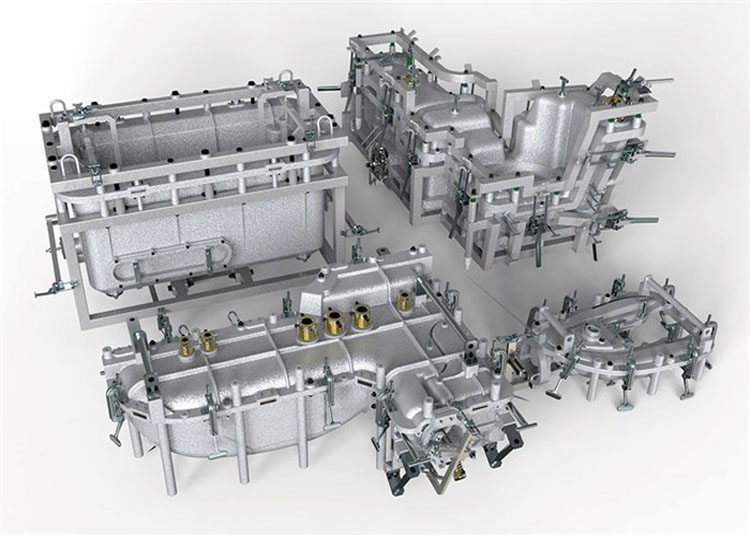Rotational molding, also known as rotational molding, rotational molding, rotary molding, etc., is a thermoplastic hollow molding method. The method is to first add plastic raw materials into the mold, then the mold is continuously rotated along two vertical axes and heated, and the plastic raw materials in the mold are gradually and uniformly coated and melted and adhered to the mold cavity under the action of gravity and thermal energy. On the entire surface, it is formed into the desired shape, and then cooled to form a product
(1) Suitable for molding large and extra large parts. Since the rotational molding process only requires the strength of the frame to support the weight of the material, the mold, and the frame itself, as well as the closing force to prevent material leakage, even if processing large and extra-large plastic parts, there is no need to use very heavy equipment and molds. . Therefore, in theory, there is almost no upper limit on the size of the products made by the rotational molding process.
(2) It is suitable for the production of multi-variety and small-batch plastic products-due to the simple structure and low price of the mold for rotational molding, it is very convenient to change products.
(3) It is suitable for processing large-scale hollow products with complex shapes, which is unmatched by other molding processes;
(4) It is easy to change the color of plastic products. When the color of the product needs to be changed, it is only necessary to clean the molding die.
(5) The main disadvantages of rotary molding are: high energy consumption, because in each molding cycle, the mold and the mold base need to undergo repeated heating and cooling; the molding cycle is long, because the heat is mainly conducted by the static plastic. , so the rotary molding heating time is long; the labor intensity is large, and the dimensional accuracy of the product is poor.
Post time: May-19-2022

